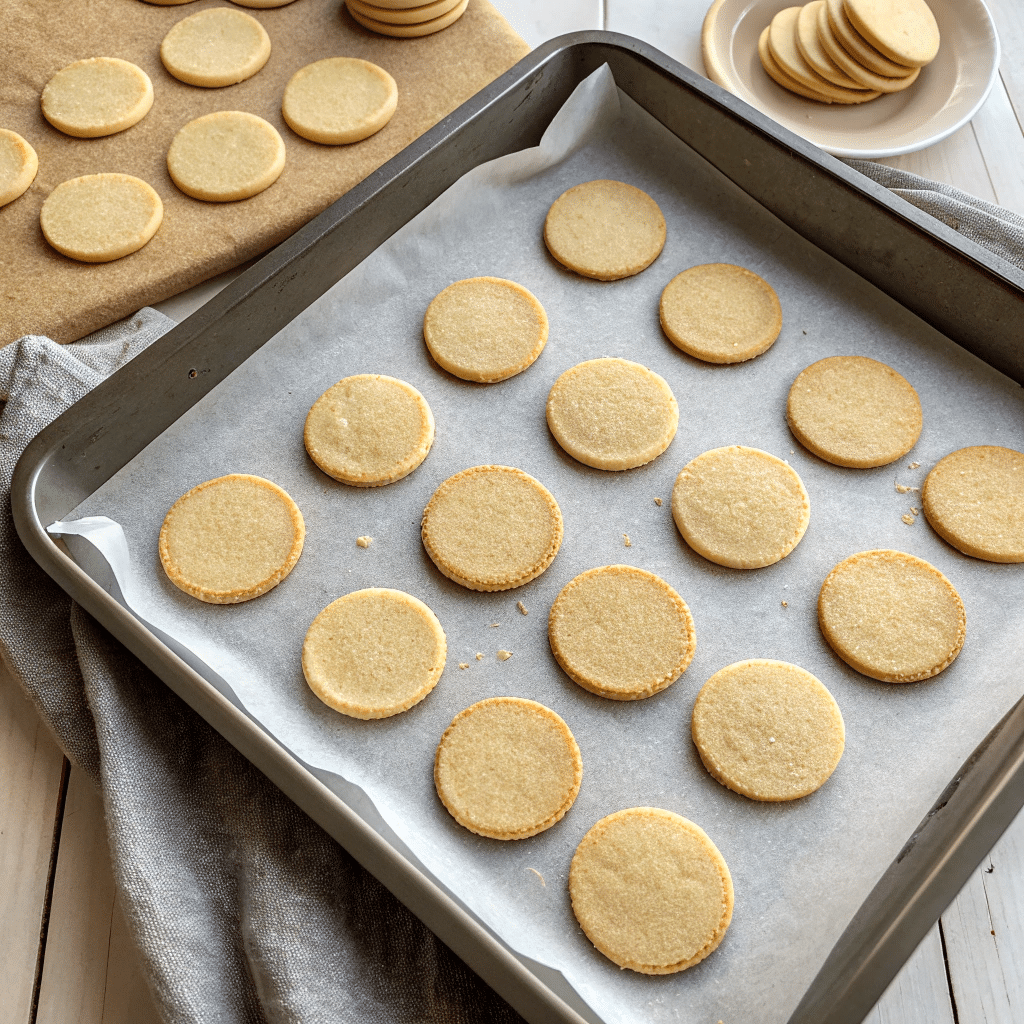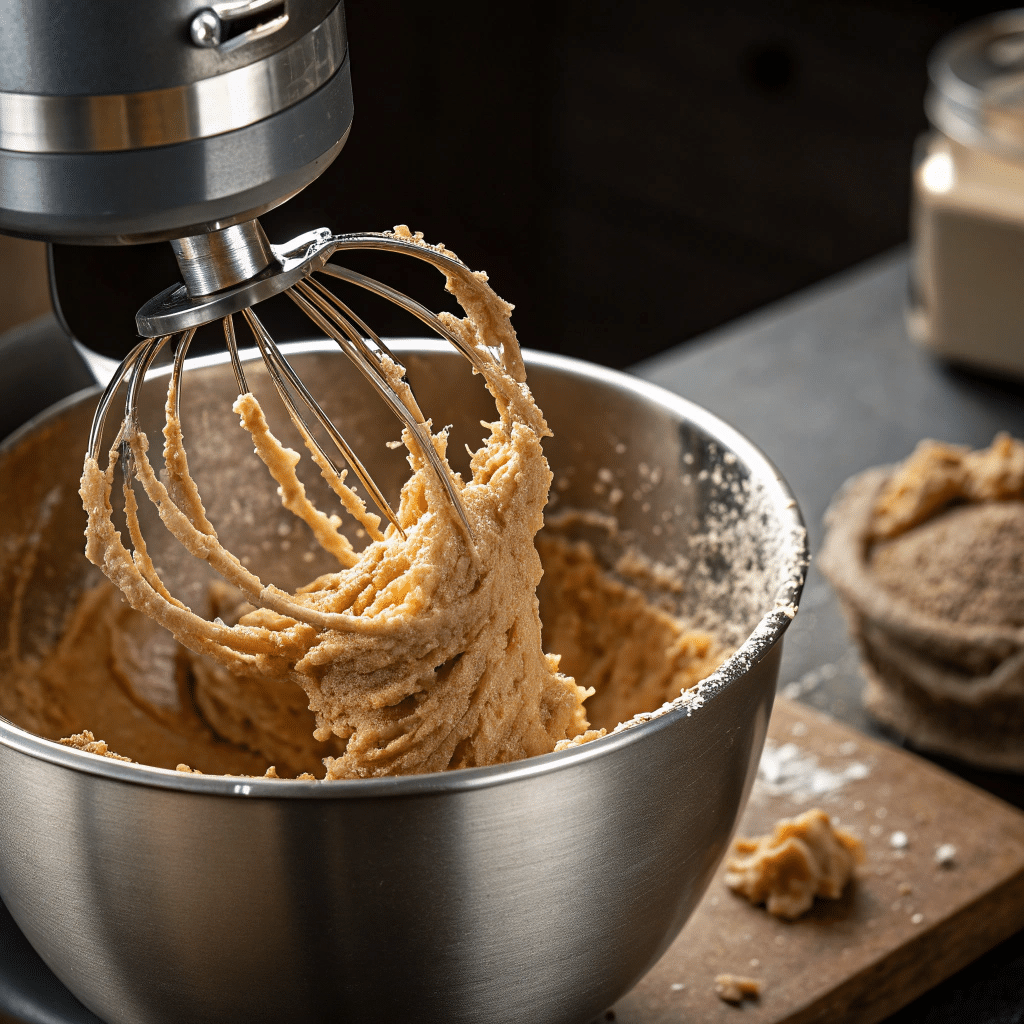Cookies are supposed to come out of the oven golden, chewy, and irresistible. But sometimes they flatten into sad little puddles on the baking sheet. If you’ve ever wondered why cookies spread too much or whispered to yourself, why did my cookies come out flat?—don’t worry. I’ve been there. Let’s dive into the reasons behind this common baking hiccup and talk about how to stop it, so your next batch comes out picture-perfect.
The Main Culprits Behind Spreading Cookies
When cookies spread too much, it usually comes down to a handful of simple issues. Let’s walk through them:

1. Butter That’s Too Soft (or Melted)
Butter is like the foundation of your cookie dough. If it’s too warm when you mix it, the dough loses structure and spreads like crazy. Instead of holding its shape, the fat melts too quickly in the oven.
Quick fix: Chill your dough before baking. Ten to fifteen minutes in the fridge can do wonders.
2. Too Much Sugar
Sugar isn’t just for sweetness—it affects the texture. It melts during baking, which can cause your dough to spread more than expected. If you’ve accidentally packed the sugar instead of scooping lightly, that could be the culprit.
Quick fix: Measure carefully. Use a spoon to fill your measuring cup, then level it with a knife. Don’t just scoop straight from the bag.
3. Flour Measuring Mistakes
Flour gives cookies structure. Too little flour, and your dough can’t hold itself together. That’s a fast track to flat cookies.
Quick fix: Always spoon flour into your measuring cup instead of scooping. Or better yet, weigh it.
4. The Oven’s Too Hot
A super-hot oven melts butter before the cookie has time to set. That’s why you might notice burnt edges with raw centers.
Quick fix: Double-check with an oven thermometer. Ovens can run hotter than you think.
5. Overmixing the Dough

Mixing builds gluten, and too much gluten makes cookies tough and floppy. If you’ve ever thought, my cut out cookie recipe doesn’t hold shape, this might be why.
Quick fix: Mix just until ingredients come together. No more.
6. Wrong Baking Sheet
Thin, dark pans heat up faster and can make cookies spread unevenly.
Quick fix: Use light-colored, heavy baking sheets. Line them with parchment paper for consistency.
How to Keep Sugar Cookies From Spreading
Sugar cookies are a whole different beast because they’re supposed to keep sharp edges for decorating. If yours are blurring into blobs, here’s what works:
- Roll the dough thicker (about ¼ inch).
- Always chill dough before cutting shapes.
- Don’t over-grease your pan—parchment works best.
- If making ahead, store cutouts flat in the freezer before baking.
It’s a small effort, but it makes all the difference for crisp edges.
Common Cookie Questions (and Honest Answers)
Let’s tackle some classic cookie conundrums:
Q: Why do my no bake cookies not set?
A: That usually means the sugar mixture didn’t boil long enough. No bake cookies rely on the sugar reaching the right temperature to harden. Give it a solid rolling boil (about 60–90 seconds).
Q: Can I make chocolate chip cookies chewy instead of flat?
A: Yes! Add an extra egg yolk for richness, and chill the dough before baking. This slows the spread and gives that chewy bite.
Q: My cookie dough feels too sticky. What should I do?
A: Sticky dough usually means it’s too warm or has too little flour. Chill it for 20 minutes. If it’s still sticky, dust in a tablespoon of flour.
Q: Why do cookies get crispy instead of soft?
A: Longer baking times plus higher sugar make crispier cookies. If you want soft, pull them out a minute earlier than you think you should.
Cookie Hacks You’ll Actually Use

I don’t like filler “hacks” that don’t work. These are the ones I swear by:
- Chill the dough: Even 30 minutes in the fridge gives you thicker cookies.
- Use room-temp eggs: They mix better with butter.
- Stack pans: If your oven runs hot, place one empty pan under the one with cookies. It prevents bottoms from over-browning.
- Mix up cookie flavors: Add spices like cinnamon or cardamom to classic dough—it transforms basic cookie recipes into something fun.
- Freeze pre-scooped dough balls: Bake straight from the freezer for fresh cookies whenever you want.
Quick Troubleshooting Table
| Problem | Likely Cause | Fix |
|---|---|---|
| Cookies spread too much | Butter too soft, not enough flour, hot oven | Chill dough, measure flour properly, use oven thermometer |
| Cookies too flat | Overmixed dough, too much sugar | Mix less, measure carefully |
| Cut-out cookies lose shape | Warm dough, thin rolling | Chill dough, roll thicker |
| No bake cookies don’t set | Sugar not boiled long enough | Boil mixture 60–90 seconds |
| Crispy instead of chewy | Overbaking, high sugar | Bake shorter time, add egg yolk |
A Tried-and-True Chocolate Chip Cookie Recipe
Here’s a basic recipe that doesn’t spread too much, works for beginners, and tastes amazing.
Ingredients:
- 1 cup unsalted butter (cold, cut into cubes)
- 1 cup brown sugar
- ½ cup granulated sugar
- 2 large eggs
- 2 ½ cups all-purpose flour
- 1 tsp baking soda
- ½ tsp salt
- 2 cups chocolate chips
Instructions:
- Preheat oven to 350°F (175°C).
- Beat butter and sugars until combined. Don’t overmix.
- Add eggs one at a time. Mix briefly.
- In another bowl, whisk flour, baking soda, and salt.
- Fold dry mix into wet until just combined.
- Stir in chocolate chips.
- Scoop dough balls and chill 15 minutes.
- Bake 10–12 minutes until edges are golden.
This recipe hits that balance between chewy and structured, so they won’t spread into thin pancakes.
Final Thoughts

Baking cookies isn’t about perfection—it’s about joy. So if your cookies spread too much, laugh, grab a glass of milk, and eat them anyway. They’ll still taste good, even if they look like pancakes. But with a few small tweaks—like chilling dough, measuring carefully, and watching oven temps—you’ll be back to bakery-worthy cookies in no time.
FAQs
Why do my cookies spread so much even after chilling the dough?
That often means too much butter or too little flour. Check measurements.
How do I fix flat cookies after baking?
You can’t fix the shape, but you can repurpose them. Crumble them over ice cream or use as a cheesecake crust.
Is it okay to re-bake cookies if they’re too soft?
Yes, you can pop them back in for a couple minutes. Just watch closely—they’ll brown fast.
Can I use margarine instead of butter?
You can, but margarine has more water, which makes spreading worse. Stick to real butter for best results.
What’s the secret to thick, bakery-style cookies?
Cold butter, chilled dough, and a slightly underbaked center. Let them set on the pan before moving.

